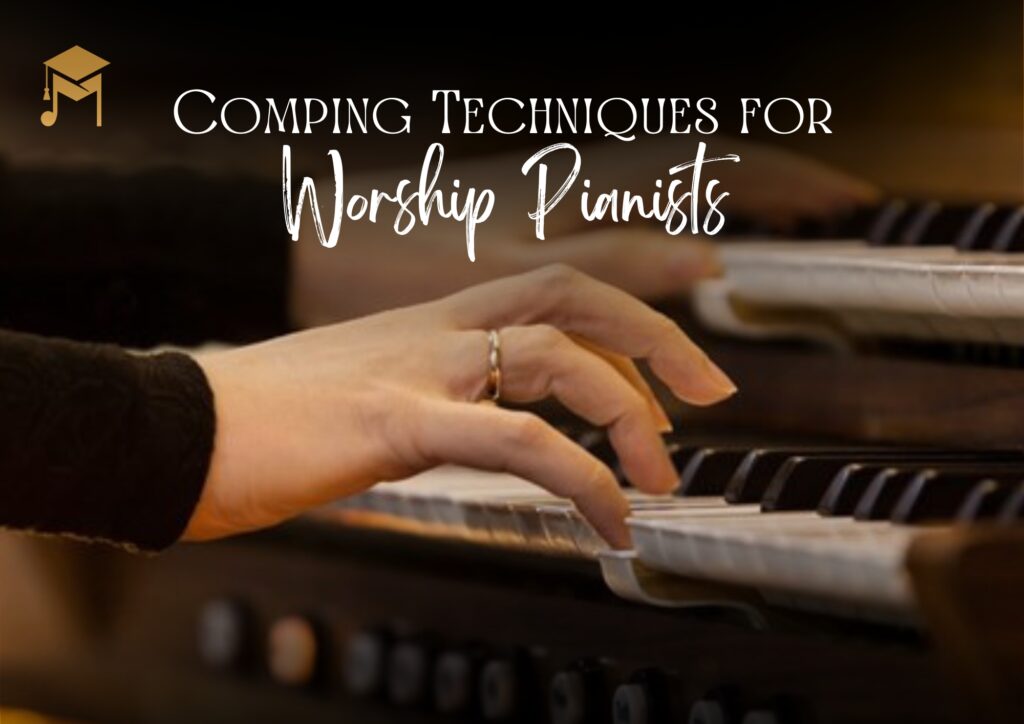Comping Techniques for Worship Pianists
Introduction
Comping, short for “accompanying,” is a vital skill for any worship pianist. This technique involves providing rhythmic and harmonic support to a melody or a soloist, ensuring that the music is cohesive and dynamic. In a worship setting, effective comping can elevate the worship experience, helping to create an atmosphere conducive to worship and reflection. Whether you’re a seasoned pianist or just starting out, mastering comping techniques can significantly enhance your musical contribution to your worship team.
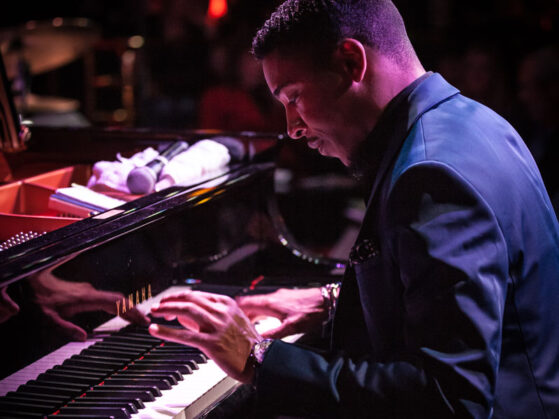
Understanding the Role of a Worship Pianist
As a worship pianist, your primary role is to support the worship leader and congregation, creating a musical foundation that enhances the overall worship experience. This involves:
- Providing Harmonic Support: Playing chords that support the melody and other instruments.
- Creating Rhythmic Interest: Adding rhythmic variations to keep the music engaging.
- Maintaining the Atmosphere: Ensuring that your playing reflects the mood and message of the worship.
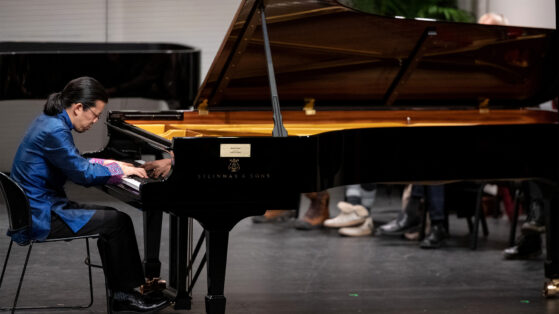
Essential Comping Techniques
1. Chord Voicings
Chord voicings refer to the way you arrange the notes in a chord. Proper voicing can add depth and richness to your playing. Here are a few voicing techniques:
- Triads and Extended Chords: Start with basic triads (three-note chords) and gradually incorporate extended chords like 7ths, 9ths, and 11ths to add color.
- Inversions: Use different inversions of chords to create smooth transitions between chords and to add variety.
- Drop-2 Voicings: This technique involves taking the second highest note in a chord and dropping it an octave, creating a fuller sound.

2. Rhythmic Patterns
Adding rhythmic variety to your comping can make your playing more interesting and dynamic. Consider these patterns:
- Quarter Notes and Eighth Notes: These basic rhythms provide a steady foundation.
- Syncopation: Accenting off-beats can add excitement and drive to your playing.
- Arpeggios: Breaking up chords into individual notes played in sequence can add a flowing, melodic quality to your comping.
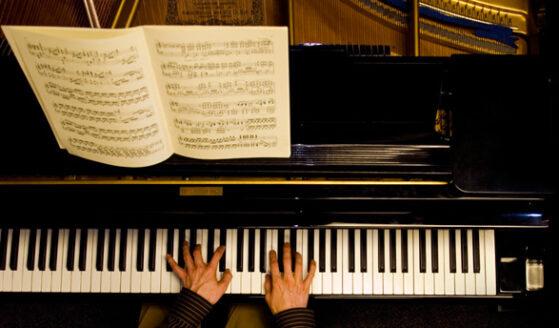
3. Dynamics and Expression
Playing with dynamics and expression can convey the emotional depth of the worship song:
- Volume Variations: Play softer during reflective parts and louder during powerful moments.
- Articulation: Use legato (smooth and connected) and staccato (short and detached) touches to enhance the expressiveness of your playing.

Practical Application in Worship Settings
1. Ballads and Slow Worship Songs
For slower songs, focus on creating a lush, supportive texture:
- Use Extended Chords: Incorporate 7ths, 9ths, and 11ths to add depth.
- Play Smooth Arpeggios: This creates a serene and flowing background.
- Maintain a Soft Touch: Ensure your playing is gentle and reflective, aligning with the mood of the song.
2. Upbeat and Lively Worship Songs
In faster songs, your goal is to add energy and drive:
- Use Syncopated Rhythms: Add rhythmic interest by playing off-beat accents.
- Incorporate Rhythmic Chords: Play staccato chords to add a percussive element.
- Play with Confidence: Ensure your playing is bold and rhythmic, matching the energy of the worship.
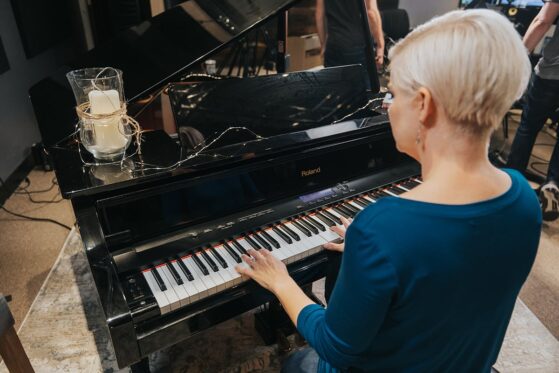
Advanced Comping Techniques
1. Voice Leading
Voice leading involves moving smoothly from one chord to another with minimal movement between notes. This creates seamless transitions and a cohesive sound:
- Guide Tones: Focus on the 3rd and 7th notes of the chords, as these are the most important for defining the harmony.
- Stepwise Motion: Move notes by step (rather than leap) to create smooth transitions.
2. Substitutions and Alterations
Adding chord substitutions and alterations can introduce new colors and harmonic interest:
- Tritone Substitutions: Replace a dominant chord with another dominant chord a tritone away.
- Altered Chords: Use altered dominants (e.g., C7#9) to add tension and release.
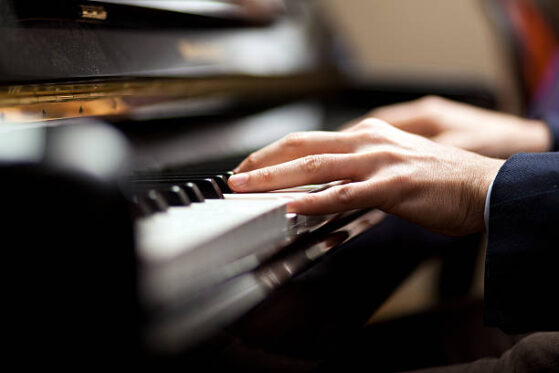
Tips for Effective Comping
- Listen and Adapt
Always listen to the worship leader and other musicians, adjusting your playing to support the overall sound. - Keep It Simple
Avoid overplaying. Sometimes less is more, especially in a worship setting. - Practice Regularly
Regular practice helps internalize different comping patterns and techniques, making them second nature during live worship.

Conclusion
Comping is a multifaceted skill that can significantly enhance your role as a worship pianist. By mastering chord voicings, rhythmic patterns, and advanced techniques like voice leading and substitutions, you can provide dynamic and sensitive accompaniment that elevates the worship experience. Remember, the ultimate goal is to support the worship and create an atmosphere where the congregation can connect with the divine. Happy playing, and may your music bring glory to God!
For more information and exciting resources about learning music, visit our website at The Mystic Keys. For more music content and exciting offers follow us on
Facebook, Instagram, YouTube, LinkedIn, Twitter, Pinterest, Reddit, Threads and Quora. Together, let’s transform the way we express our faith through the power of music!


